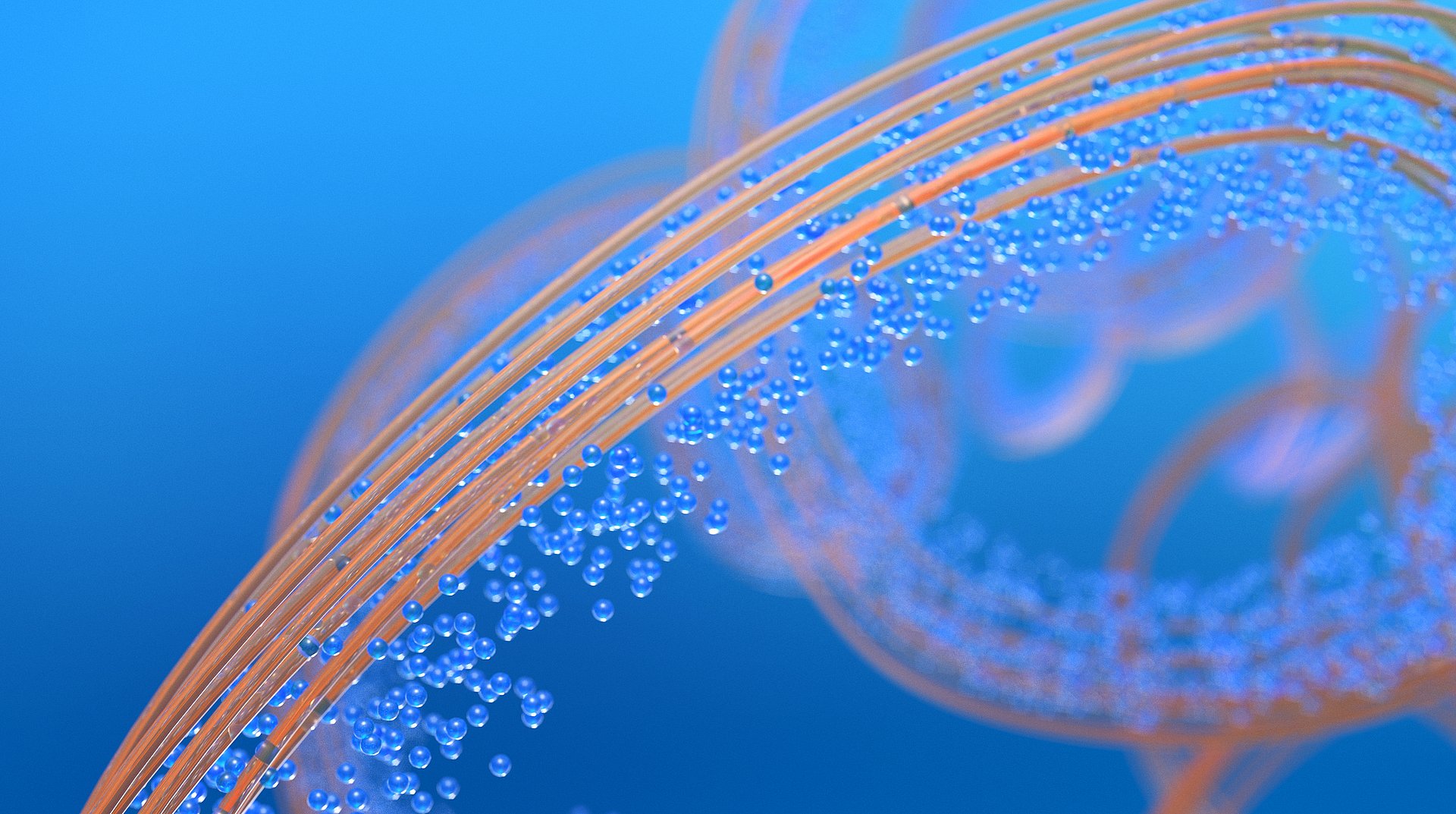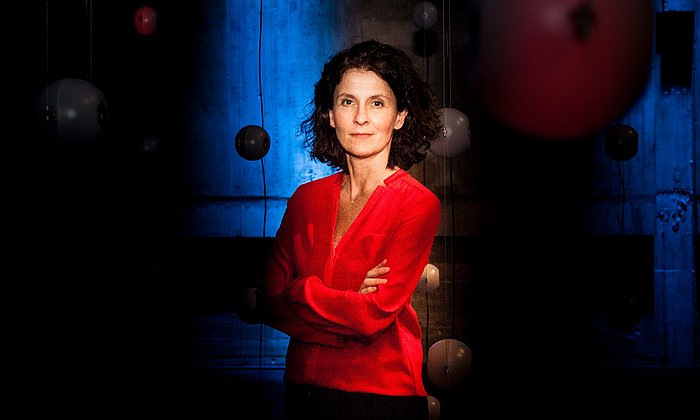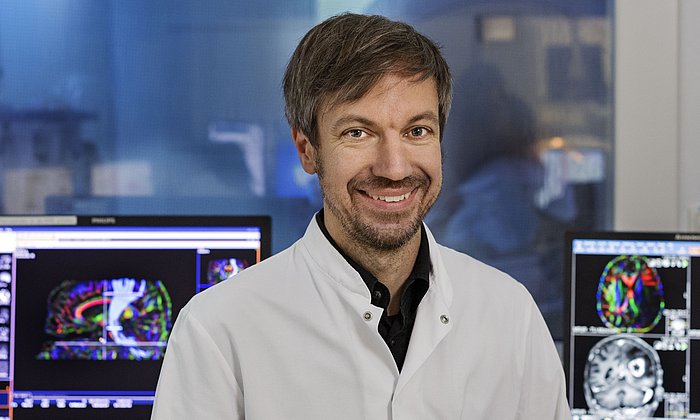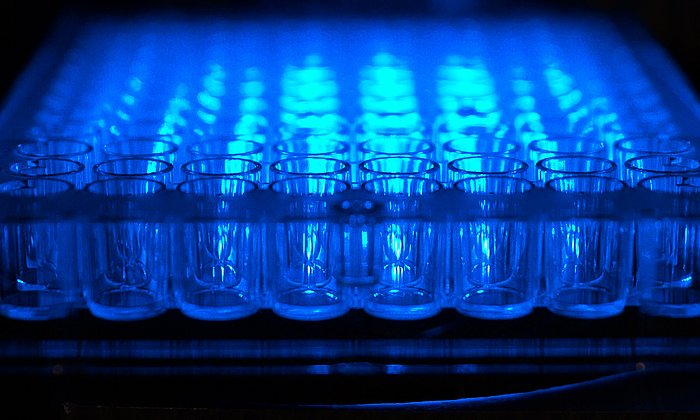Huge success for young academic talent
12 ERC Starting Grants awarded to TUM researchers

TUM President Prof. Thomas F. Hofmann: “Twelve ERC Starting Grants – a tremendous success for TUM and an international confirmation of the high scientific quality of the researchers. I offer my sincere congratulations to those who have earned these grants, and I am very eager to see the fascinating results of their research projects.”
So far, TUM researchers have succeeded in winning a total of 176 renowned ERC Grants, awarded each year in a variety of categories. ERC Starting Grants are intended for scientists who are still at the beginning of their careers; the Grants are endowed with up to 1.5 million euros.
Prof. Dr. Pramod Bhatotia
Advancements in computing hardware and AI combined with big data have led to various data-driven intelligent applications in health, mobility, and robotics among others. These applications use a large number of decentralized computers to process user data. While becoming an integral part of our daily lives, they must be reliable and secure in a policy-compliant manner. An example is GDPR, which mandates the EU data protection policy. However, ensuring reliable and secure execution is challenging since it requires programming a diversified set of computers hosted in multiple untrusted jurisdictions.
To tackle these challenges, Pramod Bhatotia will receive an ERC Starting Grant to develop DOS, a Decentralized Operating System. The DOS project seeks to bridge this gap by pursuing a radically new hardware/OS co-design, where reliability and security properties are enforced by the foundational layers of computing in a policy-compliant manner.
Pramod Bhatotia is Professor of Distributed and Operating Systems.
Dr. Johanna Eichhorn
A promising approach to directly convert sunlight into storable fuels is photoelectrochemical energy conversion. Economically viable and scalable photosystems are often based on semiconducting thin films. These photoelectrodes exhibit locally varying material properties, from the nanoscale to the microscale. To date, typical macroscale characterization techniques average the performance and fundamental properties over the whole photoelectrode and conceal important nanoscale insights. The DynNano research program of Dr. Johanna Eichhorn will leverage a complementary suite of advanced nanoscale microscopy and spectroscopy techniques to reveal the local processes of semiconductor photoelectrodes under realistic operation conditions. The gained comprehensive portrait of the elementary steps associated with light-to-chemical energy will provide the knowledge basis for rational development of efficient, stable, and scalable solar fuel devices.
Dr. Johanna Eichhorn is a researcher at TUM’S Walter-Schottky-Institute.
Dr. Terrance J. Hadlington
Synthetic amines are commodity organic compounds that are important, for instance, to treat water or to produce pharmaceuticals. They are made on a huge scale industrially, but current production processes are typically inefficient, and generate considerable chemical waste. With his project SINGAMBI, Terrance Hadlington wants to develop an amine production process that is highly efficient and completely waste-free. To do so, he is developing new cooperative molecular systems. They combine main group elements and transition metals to overcome the challenge of activating ammonia. Using these cooperative systems, he then aims to directly add ammonia to alkenes, for the sustainable production of amines.
Dr. Terrance Hadlington is a researcher at the Chair of Inorganic Chemistry with Focus on Novel Materials.
Prof. Dr. Angelika Harbauer
Many neurological disorders are associated with dysfunctions in cellular power plants, the mitochondria. In their project MitoPIP, Angelika Harbauer and her team will study mitochondria in nerve cells, more precisely: the communication between the two. The protein synaptojanin 2 plays an important role in these processes, which is not yet completely understood. In many diseases, communication signals between mitochondria and other cell components are disrupted. Some drugs used to treat neurological disorders act through a communication pathway that also involves synaptojanin 2. Angelika Harbauer and her team will take a detailed look into the mechanisms and pathways linked to this protein. Their goal is to better understand the development of disease and the mode of action of pharmaceuticals, hopefully identifying starting points for new therapies.
Angelika Harbauer is Professor of Neurons and Metabolism at TUM. As a member of the MaxPlanck@TUM program, she also heads a research group at the Max Planck Insitute for Biological Intelligence (in foundation).
PD Dr. Simon Heidegger
Extracellular vesicles (EVs) are particles enclosed by a membrane which are secreted by most of the cells in our bodies. They move within the body and can be taken up by other cells. Due to their load of proteins, lipids and nucleic acids, they play an important role in communications between various cells. In his IMMUNO-TEX project, Simon Heidegger aims to utilize this property for immunotherapy cancer treatments. Heidegger and his team have identified a way of causing tumors to secrete EVs with special properties. They contain antigens of the tumor as well as substances that promote immune responses in the body. These vesicles might provide a way to stimulate the body of a cancer patient to form tailor-made immune cells that will fight the tumor. Simon Heidegger will initially study the mechanisms underlying the function of EVs secreted by tumors more closely. In a later phase the concept will be tested in animal models and “artificial tumors”.
Adjunct Teaching Professor Dr. Simon Heidegger is a researching physician at the Clinic and Polyclinic for Internal Medicine III of Klinikum rechts der Isar and heads a research group at the Central Institute for Translational Cancer Research (TranslaTUM).
PD Dr. Thorsten Kessler
Whether a person is at risk of a heart attack or coronary heart disease as well as the course of these illnesses is influenced by many factors. These include changes in various cell types such as cardiac muscle cells, vascular cells and blood cells, which are subject to intensive research. In the MATRICARD project, however, Thorsten Kessler is studying the extracellular matrix (ECM). This term describes the structural network in which the cells are positioned. In recent years it has become clear that the ECM is more than a supporting scaffold. It also plays a role in intercellular communications. Kessler and his team have already discovered that proteins in the ECM can influence the behavior of neighboring cells, for example inflammatory responses. The scientists now plan to analyze the molecular mechanisms in the ECM in greater detail and identify possible starting points in the search for new drugs to treat cardiovascular diseases.
Adjuct Teaching Professor Dr. Thorsten Kessler leads a research group at the German Heart Center Munich, a clinic at TUM.
Prof. Dr. Henrike Niederholtmeyer
Many biomolecules, such as proteins and RNA, are capable of spontaneously concentrating themselves in molecularly dense, droplet-like assemblies. These so-called biomolecular condensates are considered highly promising tools in synthetic biology and material sciences, for example as microscopic bioreactors. However, in order to be able to produce and use such condensates, it will first be necessary to better understand how their material properties influence biochemistry and to develop strategies for regulating the dynamic assemblies. In the project SYNSEMBL Henrike Niederholtmeyer wants to achieve pioneering work in the synthesis, characterization and exploration of the functions of biomolecular condensates as well as to pave the way for their application.
Beginning in December, Dr. Henrike Niederholtmeyer will conduct research as a professor for synthetic biology at the TUM Campus Straubing. She is currently on staff at the Max Planck Institute for Terrestrial Microbiology in Marburg.
Prof. Dr. Andreas Putz
Standardized, mass-produced building components define the high-tech architecture of the second half of the 20th century. The quantity of individual components and associated data represent a formidable challenge for historical and technical evaluation in today's renovation measures. Since construction plans are usually difficult to find and if available only in analog form, building components are replaced or exchanged more frequently than necessary. Andreas Putz would like to counteract the unnecessary destruction of newer building fabric with the CONSTEMO research project. To this intent, window frames of buildings that were built between 1960 and 1990 are to be examined first. Data generated from historical sources and 3D scans will be combined in a digital archive. This collection will provide, for the first time, a comprehensive overview and understanding of windows in late modern architecture that will be critical to their future preservation and reuse.
PD Dr. Sebastian Seibold
Forests play an important role in climate change because they absorb and store CO2. However, part of the natural cycle is also the decomposition of dead plants by fungi and insects, during which the stored CO2 is released. Sebastian Seibold will study this regulatory cycle in the project BIOCOMP. In a global study, he wants to investigate how decomposition processes change with increasing climate warming and simultaneous changes in species diversity. The goal is to provide data and strategies to address this challenge of current climate and forest policy.
Adjunct Teaching Professor Dr. Sebastian Seibold is a research associate at the Chair of Ecosystem Dynamics and Forest Management in Mountain Landscapes at TUM of Prof. Rupert Seidl.
Prof. Dr. Mathias Wilhelm
Proteins play a crucial role in biological processes in all organisms. Their blueprints are encoded in genes, whereby a single gene may well be responsible for several variants of proteins, so-called isoforms. In his ORIGIN project, Mathias Wilhelm wants to use the huge amount of existing data from mass spectrometry studies to train neuronal networks. His main goal is to develop an analysis method that, for the first time, allows the systematic identification and quantification of isoforms using this artificial intelligence. This is supposed to significantly increase our understanding of the molecular diversity of life and answer open questions about the occurrence, abundance and functional roles of these isoforms.
Mathias Wilhelm is Professor of Computational Mass Spectrometry.
Dr. David Johannes Wuepper
Increasing land degradation is a global problem with serious implications for climate change, biodiversity, water quality and agricultural production. All over the world, countries are trying to counteract this development, relying on a variety of different strategies. In his project LAND-POLICY, David Johannes Wuepper wants to record these government measures worldwide and analyze their respective effectiveness. The resulting database will use machine-learning software, among other things, to enable a comparison of the cost-effectiveness of such measures for the first time. The aim is to support policymakers and the public in the future selection of appropriate measures.
Dr. David Johannes Wuepper is an agricultural economist and designated as a junior research group leader at the Professorship of Forest Inventory and Sustainable Use.
Prof. Dr. Julija Zavadlav
Peptides, short chains of amino acids, can spontaneously assemble into multi-functional materials used in emerging technologies ranging from drug delivery to soft semiconductor devices. Designing these materials is challenging because scientists must identify the best amino acid sequence among enormous possibilities – much larger than one can experimentally test. Thus, there is an urgent need to understand the underlying principles that will allow for a shift from a human intuition-based to a rational design-based approach. In her project SupraModel, Prof. Julija Zavadlav will develop a novel computational framework, integrating multiscale modeling, molecular simulations, and machine learning. The framework will enable fast and accurate prediction of peptide co-assembly and unprecedented molecular insight into the process. With the obtained data, she aims to provide much-needed guidance for developing next-generation peptide-based materials.
Julija Zavadlav is Professor of Multiscale Modeling of Fluid Materials.


